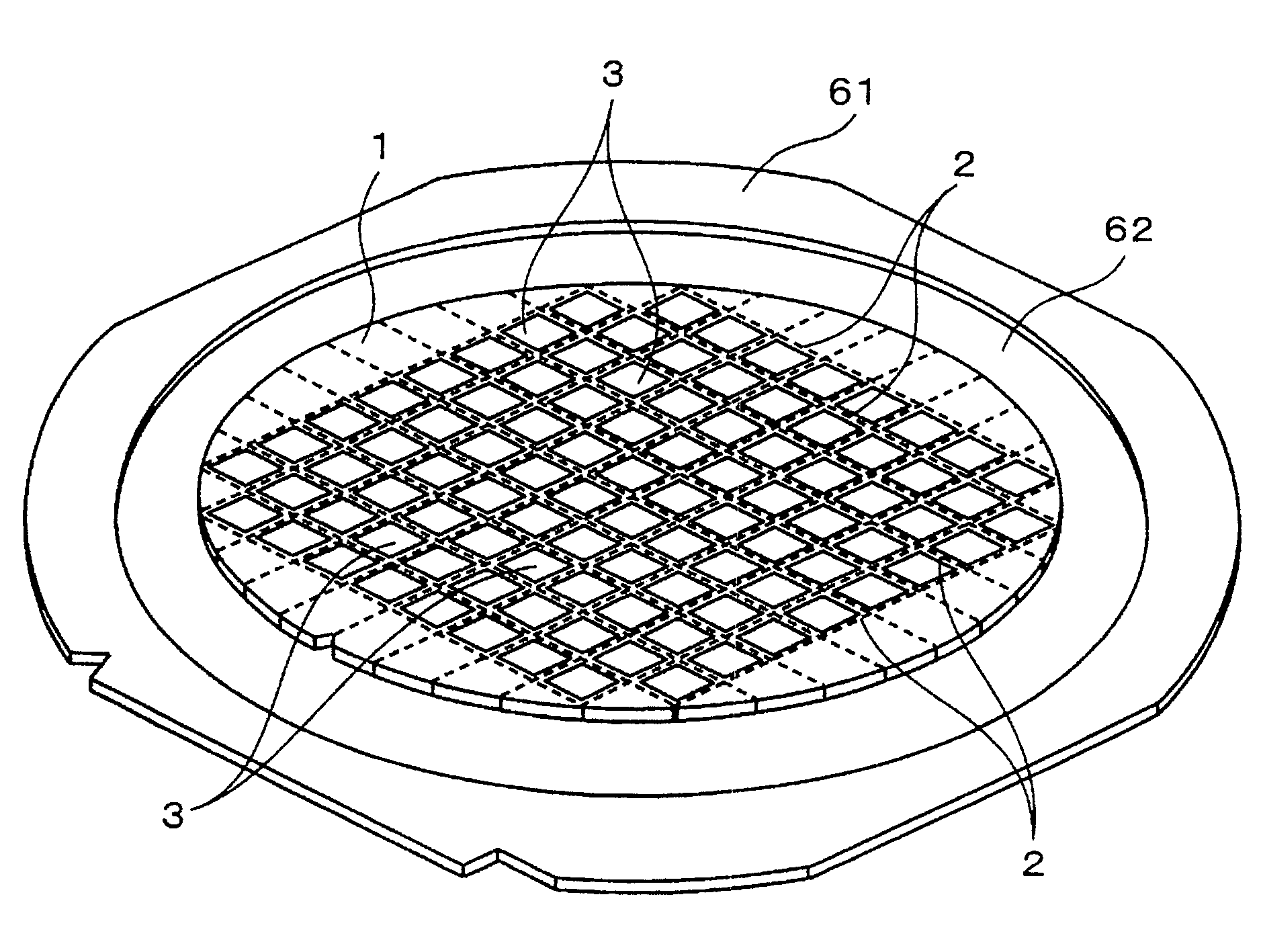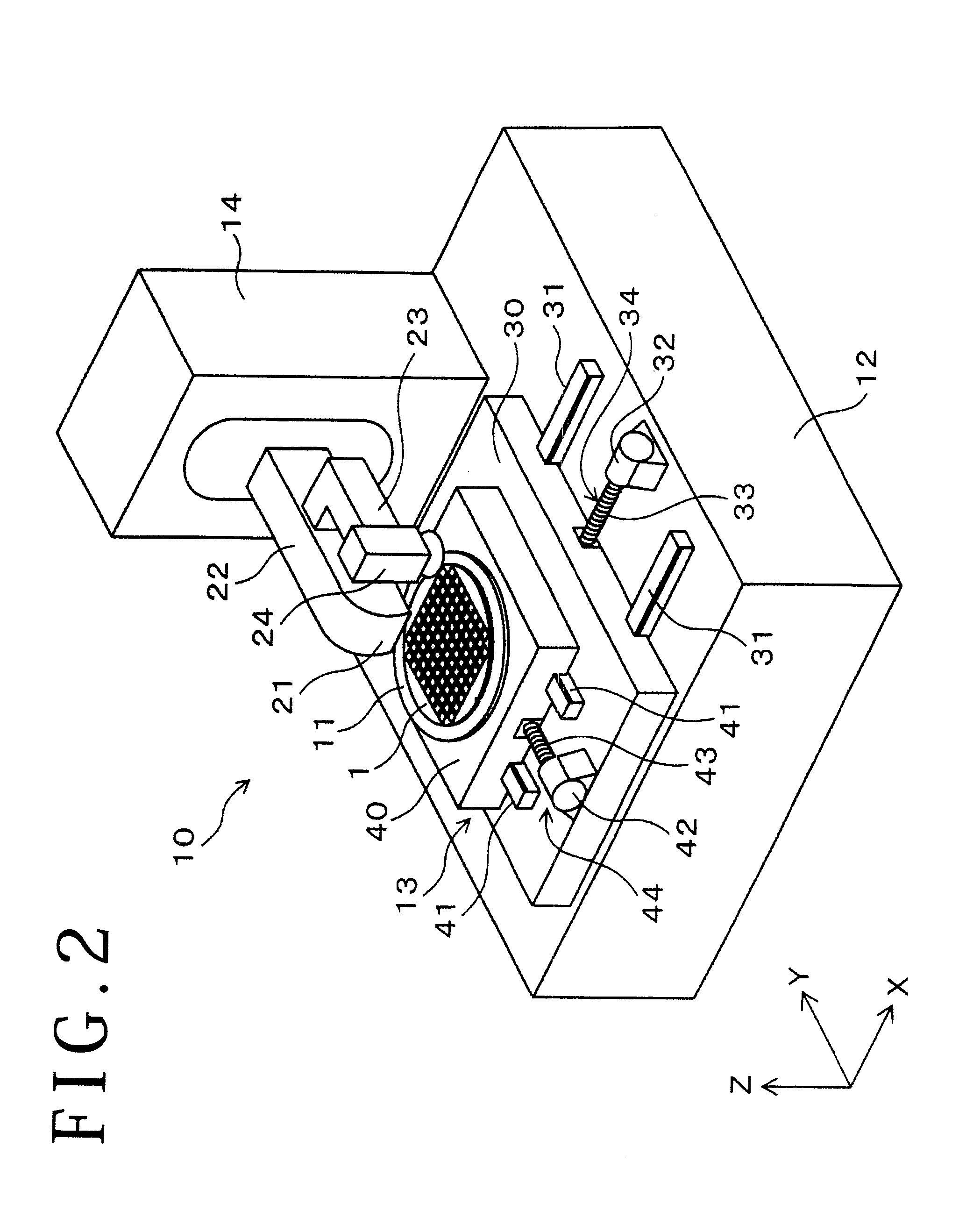Laser beam machining method for wafer
- Summary
- Abstract
- Description
- Claims
- Application Information
AI Technical Summary
Benefits of technology
Problems solved by technology
Method used
Image
Examples
example 1
[0044]A silicon wafer at a blank material stage having a diameter of 150 mm and a thickness of 400 μm was prepared as a sample. The wafer is a so-called “mirror wafer,” i.e., a wafer not provided on its face-side surface with a device pattern which might be obtained by providing electronic circuits in chip regions demarcated by grid-like planned dividing lines. The wafer was set on a chuck table of a laser beam machining apparatus the same as that shown in FIG. 2, with its face side up. The wafer was provided with virtual planned dividing lines at intervals of 1.5 mm, and, along all the virtual planned dividing lines, five composite layers (denatured layer+cracked layer, each) were formed stepwise at intervals of 20 μm, starting from a wafer inside position proximate to the back-side surface of the wafer. Next, three of the four non-cracked layers between the composite layers were subjected to irradiation with the laser beam, to form extended cracked layers. In other words, the lase...
example 2
[0053]A mirror wafer substantially the same as that in Example 1 was actually provided in its face-side surface with grid-like planned dividing lines at intervals of 1.5 mm, and suitable electronic circuits were formed in chip regions demarcated by the planned dividing lines, whereby a “pattern wafer” provided with device patterns were prepared as a sample. The wafer was irradiated with a laser beam in quite the same manner as in Example 1, whereby five composite layers (denatured layer+cracked layer, each) plus three extended cracked layers were formed inside the wafer along each of the planned dividing lines.
PUM
| Property | Measurement | Unit |
|---|---|---|
| Wavelength | aaaaa | aaaaa |
| Force | aaaaa | aaaaa |
Abstract
Description
Claims
Application Information
 Login to View More
Login to View More - R&D
- Intellectual Property
- Life Sciences
- Materials
- Tech Scout
- Unparalleled Data Quality
- Higher Quality Content
- 60% Fewer Hallucinations
Browse by: Latest US Patents, China's latest patents, Technical Efficacy Thesaurus, Application Domain, Technology Topic, Popular Technical Reports.
© 2025 PatSnap. All rights reserved.Legal|Privacy policy|Modern Slavery Act Transparency Statement|Sitemap|About US| Contact US: help@patsnap.com



